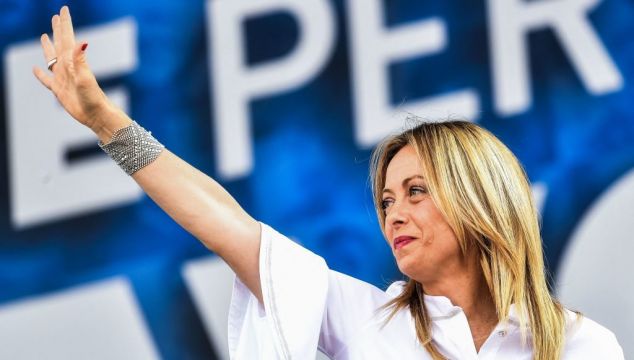Italy votes in a national election on Sunday, September 25th after Italian prime minister Mario Draghi's national unity government was brought down by party infighting in July.
Who will win?
Polls have consistently shown that a rightist coalition led by the nationalist Brothers of Italy party and also involving the League party and Forza Italia is on course for a clear victory. Brothers of Italy leader Giorgia Meloni would be the likely choice to be the country's first female prime minister.
What will be decisive?
Brothers of Italy has seen a surge in its support after it remained outside of Draghi's government. The League, led by Matteo Salvini, and Silvio Berlusconi's Forza Italia were both part of the government and their support has slipped.
The right has been helped by divisions in the centre-left where attempts by the main Democratic Party (PD) to form a broad electoral alliance fell apart.
That leaves three main groups fighting for votes - the PD and its allies, the centrist Azione party and its Italia Viva partner, and the anti-establishment 5-Star Movement.
Italy's electoral system favours groups able to form broad alliances, likely amplifying the right-wing bloc's victory.
What are the main issues for voters?
As in other European countries, the cost-of-living crisis has overshadowed other concerns such as immigration, crime and public services.
The conservative alliance has called for tax cuts across the board to help Italians cope with rising prices, while the PD wants tax reductions to be more targeted towards lower income groups.
Meloni has repeatedly voiced her support for Western policy against Russia after it invaded in Ukraine. But League leader Matteo Salvini has called for the European Union to shield Italians from the economic side effects of sanctions imposed on Russia over the invasion.
Who are the key players?
Giorgia Meloni (45): The former far-right activist from Rome has energised her party, which is set to see its share of the vote leap to around 25 per cent from only 4 per cent at the last election in 2018. Her support for Nato and Western sanctions against Russia has helped to ease foreign concerns about her suitability for the post of prime minister.
Matteo Salvini (49): Leader of the League, the abrasive former interior minister, who takes a hard line on immigration, has been eclipsed by Meloni in recent months.
Silvio Berlusconi (85): The former prime minister has shrugged off ill health and scandal to remain a major player in the rightist alliance, even if his Forza Italia is the junior partner now among its three main parties.
Enrico Letta (56): PD leader, and another former prime minister. His failure to build a stable coalition of centre-left parties has left him facing political defeat.
Giuseppe Conte (58): Leader of the 5-Star Movement. Italian prime minister from 2018-2021, he provoked anger when his party withdrew support for Draghi's government in July, sparking divisions that led to the early election. His strategy has in part been vindicated by an improvement in 5-Star's poll standings, but the party still faces a spell in opposition.
When is voting?
Polls are open from 7am-11pm local time (5am-9pm Irish time).
What to watch for?
The first hurdle for the rightist alliance will be to gain a majority in both houses of a slimmed-down parliament.
A majority of more than two-thirds would clear the way for parliament to make changes to the constitution without putting them to a referendum.
What happens next?
Coalition formation in Italy is a notoriously slow process but the prospect of a more clear-cut result means there is unlikely to be a repeat of 2018 when it took almost three months.
The new parliament will convene on October 13th. After that date, Italian president Sergio Mattarella can start consultations with party leaders to discuss the formation of a government. -Reuters







